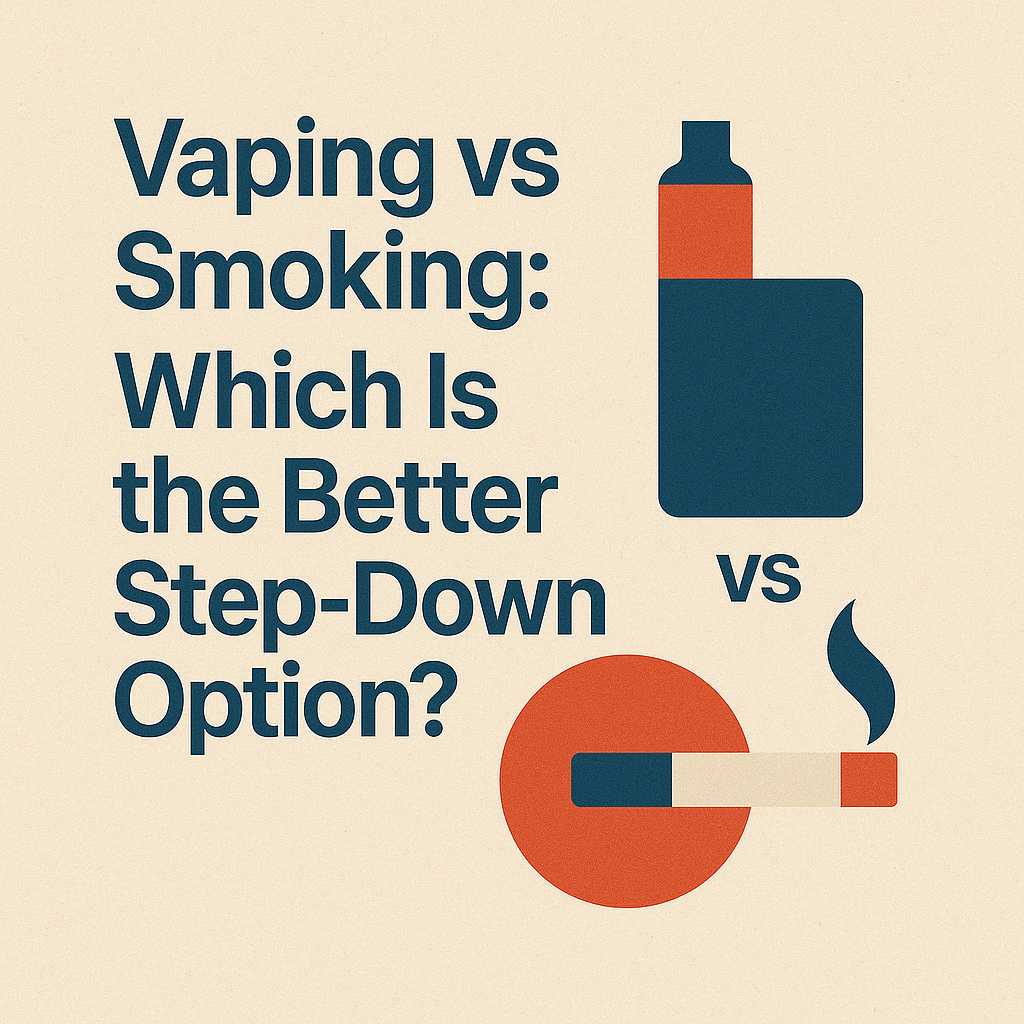When you’re trying to quit cigarettes, vaping often feels like a safer middle ground — a bridge between smoking and being completely nicotine-free. But is it really better, or just different? Let’s break down what actually changes when you switch from smoking to vaping.
1. The Smoke vs. Vapor Difference
Cigarettes burn tobacco, creating thousands of chemicals — many of them toxic. Vapes heat a liquid to produce vapor instead of smoke. That means you’re removing combustion, tar, and carbon monoxide — the biggest health threats in smoking.
- Smoking: Combustion → smoke → tar and toxins
- Vaping: Heating → vapor → fewer chemicals, no tar
It’s not “healthy,” but it’s dramatically less harmful. Think of it as damage control while you transition.
2. Nicotine Control and Gradual Reduction
One of vaping’s biggest advantages is control. You choose your nicotine level — from strong (20mg+) to zero. That allows you to taper down instead of quitting cold turkey.
- Start at your normal craving strength (for heavy smokers, 18–20mg).
- Drop to 12mg → 6mg → 3mg → 0mg over time.
This gradual approach keeps withdrawal manageable while your brain adjusts to lower doses.
3. The Hand-to-Mouth Habit
One reason vaping works for many people is that it mimics the ritual. The hand-to-mouth motion, inhale, and exhale all satisfy the psychological side of smoking. That’s why some quitters prefer vaping as a behavioral bridge before giving up nicotine completely.
Tip: As you lower nicotine, also start breaking routine triggers — for example, skip the morning vape until after breakfast.
4. The Hidden Risks of Vaping
While vaping avoids combustion, it’s not risk-free. E-liquids can contain chemicals that irritate the lungs, and nicotine addiction itself remains. Plus, long-term studies are still limited.
- Vaping may cause throat or chest irritation in some users.
- Flavored liquids can lead to overuse because they feel smoother than smoke.
- Battery safety matters — always use certified devices and chargers.
The goal isn’t to replace one dependency with another, but to use vaping as a temporary tool for harm reduction.
5. When Vaping Becomes a Trap
Some people switch completely to vaping and never move forward. They stop smoking but keep vaping for years — meaning they’ve traded smoke for vapor, not addiction for freedom.
Solution: Set a timeline. Know your exit plan before you start. Aim to lower nicotine every few weeks and go fully nicotine-free within 3–6 months if possible.
6. The Bottom Line
If you’re trying to quit smoking, vaping can be a powerful step-down option — if you treat it like a transition, not a destination. It cuts out the worst parts of smoking and gives you control over your nicotine intake. But the final goal should always be the same: freedom from nicotine altogether.
Final Thought: Vaping doesn’t make you weak; it makes you strategic. Use it as your stepping stone — then step off it when you’re ready to breathe free again.







Please log in to leave a comment.